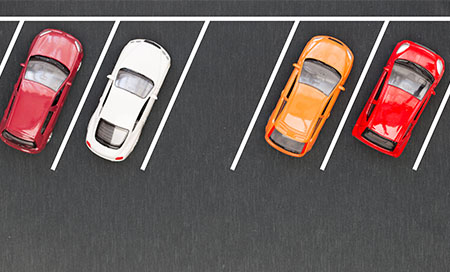Bay parking is a fundamental driving skill that everyone should master. Whether you’re heading to work, going shopping, or just parking your car, understanding how to effectively bay park is crucial.
In this comprehensive guide, we will explore what bay parking is, why it’s important, how to perform both forward and reverse bay parking, and why practice makes perfect.
What is a Bay?
Before we delve into bay parking, it’s essential to understand what a “bay” is. A bay is a designated parking space, typically found in car parks, and even along the side of the road.
Bays are usually marked with lines and are designed to facilitate organised parking. They come in various sizes and shapes, depending on their purpose.
Common Usage of Bays
Bays are commonly used for parking at various locations, such as shopping centres, offices, and public facilities. They are a convenient way to organise and maximise parking space.
However, bay parking is not limited to merely parking your vehicle. It also plays a crucial role in maintaining order and safety in crowded parking areas.

Why Bay Parking Matters
Mastering bay parking is an essential driving skill for a variety of reasons. When you can efficiently park in a bay, you:
- Comply with parking regulations and avoid fines
- Make the best use of available parking space
- Reduce the risk of accidents in crowded parking areas
- Minimise the chance of obstructing other vehicles
- Ensure the safety of pedestrians and fellow drivers
Forward Bay Parking
Forward bay parking is a common technique where you drive your vehicle forward into a parking bay. Here’s how you can do it effectively:
1. Approach the bay slowly and signal your intention to turn into it.
2. Position your car parallel to the bay and align it with the markings.
3. Steer gently and enter the bay, ensuring you are centred within the lines.
4. Once parked, engage the handbrake and shift into park or neutral.
Reverse Bay Parking
Reverse parking is an equally important technique, especially when you need to leave a bay or parallel park. Here’s how you can master how to reverse park:

1. Approach the bay slowly, signal your intent, and stop just before it.
2. Select reverse gear and begin turning your steering wheel.
3. Look over your shoulder and use your mirrors to guide your car into the bay.
4. Straighten your wheels and ensure you are properly parked within the lines.

Practice Makes Perfect
Like any skill, bay parking requires practice, especially backing into a parking spot. It’s recommended to practice in a less crowded parking area or an empty bay until you gain confidence.
Over time, you’ll become more skilled and comfortable with bay parking, making it a breeze in any situation.
Frequently Asked Questions
FAQ 1: Are there specific rules for bay parking?
While there are general guidelines, parking regulations may vary by location. Always follow local parking rules and regulations.
FAQ 2: Can I use bay parking on the street?
Yes, you can use bay parking along the roadside if designated bays are available. Follow the same techniques for street bay parking.
FAQ 3: Is bay parking the same as parallel parking?
Bay parking is slightly different, as it involves parking within marked bays, while parallel parking is typically parking alongside a curb.
FAQ 4: Can I park my motorcycle in a bay?
Yes, motorcycles can be parked in designated motorcycle bays or standard bays, depending on local regulations.